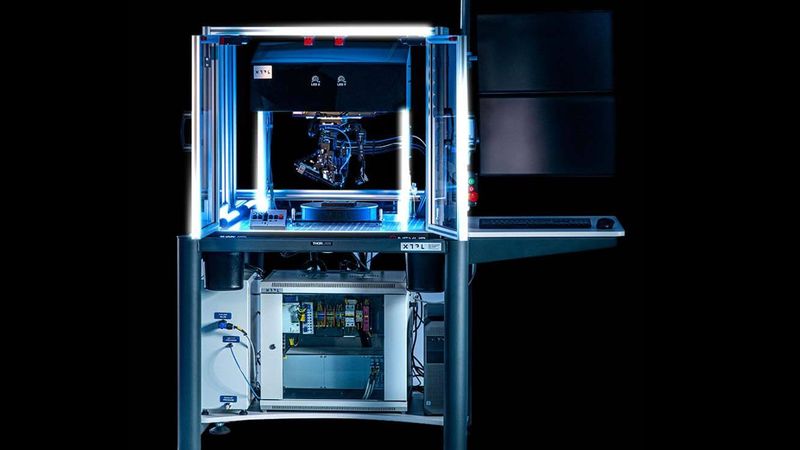Advancing Rapid Prototyping: The Future of D Delta Printers in Engineering
Delta-style motion kinematics offer speed and accuracy advantages, enabling engineers to shorten their rapid prototyping times and reduce time-to-market for new products.
No matter what new 3D printing technologies and functions emerge, speed will always be a top priority in rapid prototyping. The faster a company’s R&D team can develop prototypes for validation and testing, the faster it can ready a product for market, giving the company an edge over its competitors.
Of course, there are different ways to achieve high speeds in rapid prototyping. Hardware, firmware, and materials all play an important role, as do automated post-processing workflows that can reduce overall cycle times. However, one of the most important parts of a 3D printer in terms of printing speed is its kinematic motion style.
3D delta printers may not be the most talked-about machines in the additive manufacturing world right now, but their unique setup means they still offer great potential in rapid prototyping and beyond—and their range of applications is still growing.
How 3D Delta Printers Work
In extrusion-style 3D printing, delta 3D printers offer a different configuration and system of motions to Cartesian 3D printers, which remain the dominant type. To understand delta 3D printers and what makes them so unique, it’s important to first understand how Cartesian printers work.
In short, Cartesian 3D printers—so called because of their adherence to the Cartesian plane—move along three axes: X, Y, and Z. In other words, their movement involves going up or down, side to side, or back and forth. The important thing about (most) Cartesian printers is that each axis has its own set of motors and rails.
Delta 3D printers emerged in the early 2010s after experimentation among the RepRap 3D printing community and other engineers who wanted to harness the power of delta robotics within the world of additive manufacturing. One of the earliest influential designs was the Rostock, a relatively simple RepRap system with fewer than 200 components.
The unique kinematics of 3D delta printers made them immediately popular. Unlike Cartesian systems, delta printers use three arms mounted on three posts arranged in a triangular formation to support the printhead.[1] The three arms can move up and down independently, and this movement enables the centrally supported printhead to move in all directions. Generally, the print bed of a delta 3D printer is circular and remains stationary.
The Benefits of Delta
Delta 3D printers have a number of advantages over Cartesian (and Polar, SCARA, etc.) systems, such as increased printing speed and the potential for superior accuracy and print quality. The tradeoff for these advantages is a smaller overall build area, as well as particular challenges during assembly and calibration.
Speed
Liberated from the heavy gantries used by Cartesian-style printers, 3D delta printers have the agility to move the printhead at a rapid speed, resulting in very short printing times.[2] A fixed print bed also contributes to these faster speeds.
Print Quality
Delta 3D printers can provide superior print quality for the same reasons as above, with the lightweight printhead and fixed bed resulting in a high level of accuracy. This printing configuration is also less vulnerable to vibrations, resulting in fewer defects.
Simplicity
Although setting up a delta printer can seem daunting to those familiar with other kinematic configurations, these systems actually have fewer moving parts, resulting in fewer maintenance requirements.
Limitations
The main limitations of 3D delta printers are their unfamiliarity to users of more standard systems and their limited build volume. This is a concern for users needing to print large-volume parts but less of a problem for those printing compact or miniaturized objects.
Applications of Delta 3D Printing
Due to their exceptional speed, 3D delta printers are often the machine of choice for rapid prototyping across a range of industries, including engineering and healthcare. Short printing times allow R&D professionals to iterate prototypes on the spot, reducing the time-to-market of the finished product. Additionally, since delta systems are easy to build heated enclosures around, users can typically deploy a wide range of printing materials for their rapid 3D prints, further expanding the potential uses.
Delta-style printers also make good candidates for microscale printing due to their high level of accuracy. For example, XTPL’s Delta Printing System, a standalone R&D prototyping system that uses XTPL’s groundbreaking Ultra Precise Dispensing (UPD) technology, features elements of extrusion-style delta printers such as a circular leveling table.
Consumer-level delta 3D printers are facing competition from improved CoreXY systems, which themselves offer speed advantages over traditional Cartesian systems but without the size limitations of delta. However, 3D delta printers have a bright future ahead of them, particularly in areas such as microscale printing where a limited build area poses no issue. Because of this, expect to see more delta printers in areas like microelectronics and personalized health technology.
Resources
[1] Bell C. 3D printing with delta printers. Apress; 2015 Jul 14.
[2] Hsieh CT. Investigation of delta robot 3d printer for a good quality of printing. Applied mechanics and materials. 2017 Oct 16;870:164-9.

